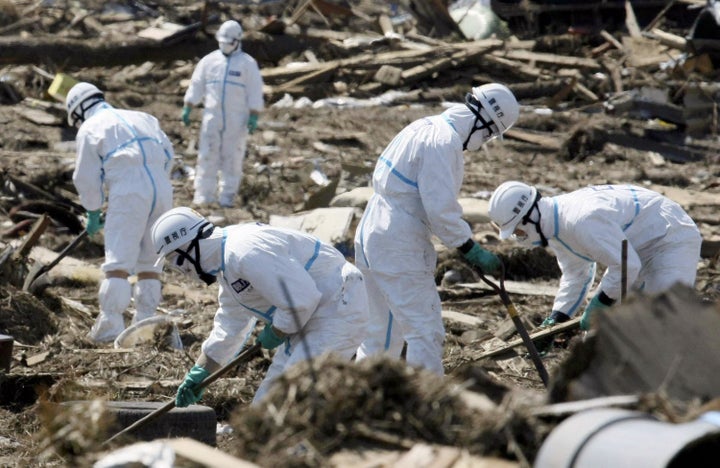
Only those of us who served in the U.S./ Occupation of Japan in the 1950s might have shaken our heads after Thursday's frontpage photos in the New York Times and Los Angeles Times that showed Emperor Akihito and Empress Michiko consoling evacuees from the debacle that struck Japan last month.
Prior to the ascendancy to the Royal throne after the death of Akihito's father, Emperor Hirohito, the notion that commoners would ever have had a view of the Japanese ruler, let alone sit with him and his wife 60 years later and have a conversation with the God-like figure would have been unthinkable. Throughout the Second World War, Hirohito was regarded by millions of Americans as a war criminal, responsible for the conflict that followed the Japanese bombing of Pearl Harbor. His image appeared in photographs and editorial cartoons that mocked him. There even were demands in America for Hirohito to be hanged. But times began to change once the U.S. Occupation took hold and General Douglas MacArthur served as commander in chief of American governance of the defeated Japanese. He decided to treat Hirohito with a peaceful reverence. Hirohito was allowed to retain his position as Emperor and he and his wife lived in isolated Imperial splendor in their palace across the moat, directly in front of the Dai Ichi bank building which had become MacArthur's headquarters. No question was left about who was in charge. It was no longer the Japanese military or the Emperor. In 1951, I was a GI in Tokyo for the Armed Forces newspaper, Pacific Stars and Stripes, when Hirohito's son, Akihito, then a teenager, passed me and lines of Japanese on the street, en route to the Imperial Palace where he would formally be invested as Crown Prince and immediate heir to the throne in the event of his father's death. Having been introduced to a wealthy commoner named Michiko Shoda at a tennis match, Akihito was reportedly smitten immediately. According to published reports later, the Crown Prince said that he had hit the ball to Michiko and she hit it back repeatedly. He "immediately lost to her persistence." Nonetheless, no one ever took their friendship seriously because it would have been unthinkable to have a commoner placed on or near the throne. In fact, the Imperial Household Agency had submitted a list of more than 800 suitable ladies of Imperial nobility who could be considered as the future Empress of Japan and Michiko Shoda was not on the list. Nonetheless, she was a woman of considerable means and more than that, she was college-educated in Japan who also enrolled in classes at Harvard and Oxford. She understood what it meant to surrender her independence. But in November 1958, she accepted Akihito's marriage proposal and to the chagrin of his parents and the Imperial household, Michiko was ordained as Crown Princess. Her influence on Akihito was striking. She insisted on raising their own children and she gave birth to three of them. The independent streak had gradually invaded the home of Imperial rule and it was symptomatic of democratic ideas that eventually began to take hold in all of Japan. That's what made Thursday's photograph of the Emperor and Empress so striking to me. But the history behind that picture was totally ignored by American newspapers that published it, probably because most of the editors were either too young or just totally oblivious to the changes that gradually were underway in all of Japan more than a half century ago.